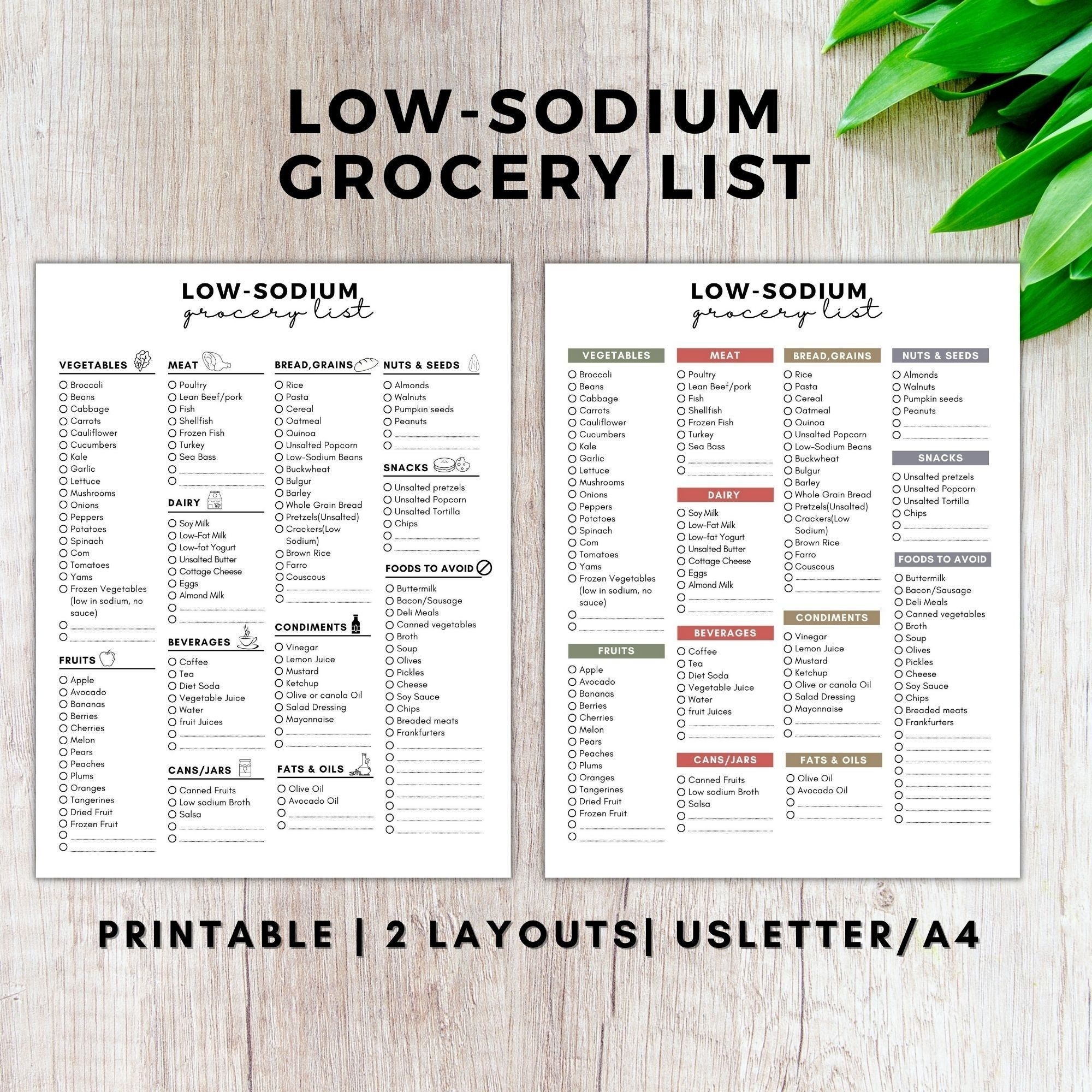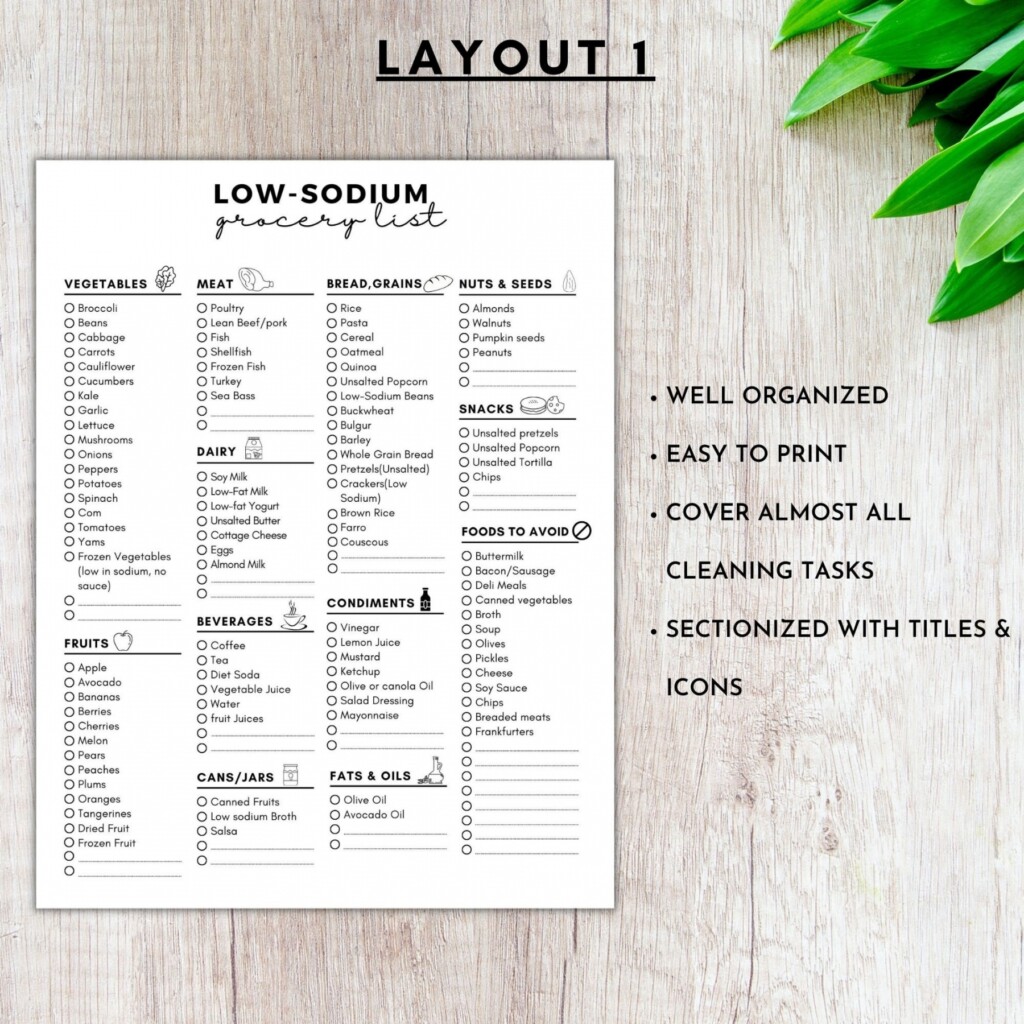A low sodium diet is a way of eating that limits the amount of salt and sodium consumed daily. High sodium intake has been linked to various health issues such as high blood pressure, heart disease, and stroke. By following a low sodium diet, individuals can reduce their risk of these health problems and improve their overall well-being.
One of the key components of a low sodium diet is having a good understanding of which foods are high in sodium and which are low. That’s where a free printable low sodium food list can be incredibly helpful. This list can serve as a quick reference guide when grocery shopping or meal planning, making it easier to stick to a low sodium diet.
Benefits of a Low Sodium Food List
Having a free printable low sodium food list can offer several benefits for those looking to reduce their sodium intake. Firstly, it can help individuals to make healthier food choices by highlighting which foods are low in sodium and therefore better for their health. This can be particularly useful for individuals with certain medical conditions like hypertension or kidney disease who need to closely monitor their salt intake.
Additionally, a low sodium food list can make meal planning and grocery shopping much simpler and more efficient. Instead of having to constantly check labels and calculate sodium content, individuals can refer to the list to quickly identify low sodium options. This can save time and reduce the stress of trying to navigate the sometimes confusing world of food labels.
How to Use a Free Printable Low Sodium Food List
Using a free printable low sodium food list is easy and straightforward. Simply download and print the list, and keep it in a convenient location like your kitchen or wallet. When planning meals or shopping for groceries, refer to the list to identify low sodium options. You can use the list to guide your food choices and help you stay on track with your low sodium diet goals.
Remember to also consult with a healthcare professional or nutritionist when making significant changes to your diet, especially if you have a medical condition that requires close monitoring of your sodium intake. They can provide personalized advice and support to help you achieve your health goals.

